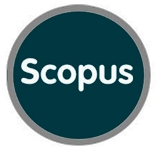EL ROCÍO Y EL TURISMO DE PEREGRINACIÓN
Abstract
The word Rocío is full of meanings; a virgin, a pilgrimage, a small village —all neighbours of the marshes of the river Guadalquivir— and named after a microclimatic phenomenon, the daily and prolific presence of water in its minimal expression, Dew. But this name recalls, over all other, the devotion for the holy virgin our Señora del Rocío, —Patron Saint of Almonte— and to the annual Pentecostal pilgrimage —the Big Rocío. This pilgrimage has experimented an enormous growth in the last fifty years, every year attracting pilgrims from more distant places, but its origins are very antique and it has always developed together with the village. In their non stop growth, that village and its festive rituals have shown a fast evolution –adaptable to new circusmstances— not rejecting or despising the incorporation of new and strange elements, that are producing substantial and deep changes in them. Therefore, the Rocío can be considered, today, a spatial, social, economical, cultural and symbolic reality «hot spot» or in constant «boiling point». The close relation between the village and the pilgrimage routes with the natural protec¬ted park of Doñana, link the Rocío with the nature conservation policies.Downloads
-
Abstract707
-
PDF (Español (España))410
Las obras que se publican en esta revista están sujetas a los siguientes términos:
1. El Servicio de Publicaciones de la Universidad de Murcia (la editorial) conserva los derechos patrimoniales (copyright) de las obras publicadas, y favorece y permite la reutilización de las mismas bajo la licencia de uso indicada en el punto 2.
2. Las obras se publican en la edición electrónica de la revista bajo una licencia Creative Commons Reconocimiento-NoComercial-SinObraDerivada 3.0 España (texto legal). Se pueden copiar, usar, difundir, transmitir y exponer públicamente, siempre que: i) se cite la autoría y la fuente original de su publicación (revista, editorial y URL de la obra); ii) no se usen para fines comerciales; iii) se mencione la existencia y especificaciones de esta licencia de uso.
3. Condiciones de auto-archivo. Se permite y se anima a los autores a difundir electrónicamente las versiones pre-print (versión antes de ser evaluada) y/o post-print (versión evaluada y aceptada para su publicación) de sus obras antes de su publicación, ya que favorece su circulación y difusión más temprana y con ello un posible aumento en su citación y alcance entre la comunidad académica. Color RoMEO: verde.





_.jpg)







